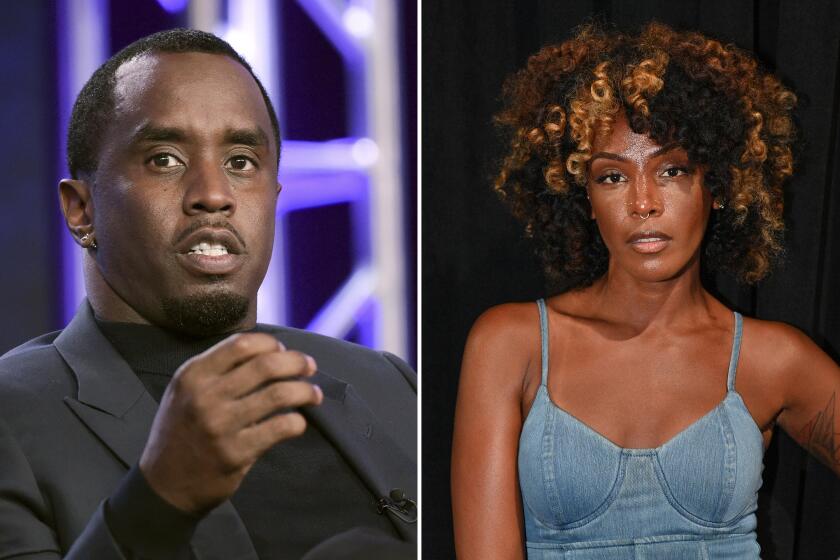Review: âDarkest America: Black Minstrelsy From Slavery to Hip-Hopâ
Are hip-hop artists such as Flavor Flav and Lil Wayne the new generation of black minstrels -- the African American jesters who used to entertain audiences with cartoonish, racially stereotypical shtick before the collapse of the Jim Crow South?
According to a just-published book, âDarkest America: Black Minstrelsy From Slavery to Hip-Hop,â the answer may well be yes. And thatâs not necessarily an entirely bad thing, according to authors Yuval Taylor and Jake Austen, both Chicago journalists.
Their book is a fascinating and authoritative critical history that traces the roots of minstrelsy back to Africa and the Civil War era, when âeven under the strict limits that harsh slave masters imposed, African Americans maintained an extraordinarily rich performance tradition,â the authors write. Along the way, it considers the contributions to the popular depiction of African Americans by the likes of W.E.B. Du Bois, James Weldon Johnson, Stephen Foster, P.T. Barnum and legendary burnt-cork-faced performers such as Al Jolson and Bert Williams.
But among the chapters most likely to get attention is âEazy Duz It,â sub-titled âHow Black Minstrelsy Bum-Rushed Hip-Hop.â Noting that both blacks and whites have attacked hip-hop for trafficking in ethnic caricatures -- the Rev. Al Sharpton once referred to gangsta rap as âthe new way of Stepin Fetchit,â and New York rapper Nas has lamented the over-the-top antics of performers such as Lil Wayne -- the authors take a more circumspect view. They discuss hip-hop pioneers such as Luther âLuke Skyywalkerâ Campbell of Miamiâs 2 Live Crew, one of the first âDirty Southâ hip-hop artists who âembraced low comedy, raucous festivity, and century-old rural stereotypes.â
By appropriating racist and demeaning imagery and bending it toward their own purposes, the authors suggest, some hip-hop artists have been able to convert old stereotypes into new tokens of empowerment. For example, the authors praise Public Enemyâs Flavor Flav, who, they write, âunderstands that comic rituals, the absurd stereotypes, and the fearless foolishness that have been a part of black comedy since the days of minstrelsy are useful tools.â
The chapter also deconstructs the controversy around the video âFry That Chicken,â by Ms. Peachez, an homage to the finger-lickinâ pleasures of soul food. A Washington Post writer castigated the video for making D.W. Griffithâs âBirth of a Nationâ seem âmildâ by comparison. But âDarkest Americaâ quotes L.A. Times and LA Weekly writer Ernest Hardy, who points out the contradictory emotions that the video arouses, centered on âthings many black folk still have shame around: Southern-ness, countriness, [homosexuality] and ingenuity born of poverty... a hodge-podge of cultural pride and internalized racist stereotypes.â
Whatever your perspective on the sensitive issues it raises, âDarkest Americaâ is a thoughtful and well-written exploration of themes that cut to the heart of our national identity and culture.
ALSO:
A conversation with Nas
âLife Is Goodâ for hip-hopâs Nas
Nicki Minajâs reveal: Not âIdol,â but it smells âlike angels playingâ
Follow Reed Johnson on Twitter @RJohnsonLAT.
More to Read
The biggest entertainment stories
Get our big stories about Hollywood, film, television, music, arts, culture and more right in your inbox as soon as they publish.
You may occasionally receive promotional content from the Los Angeles Times.











